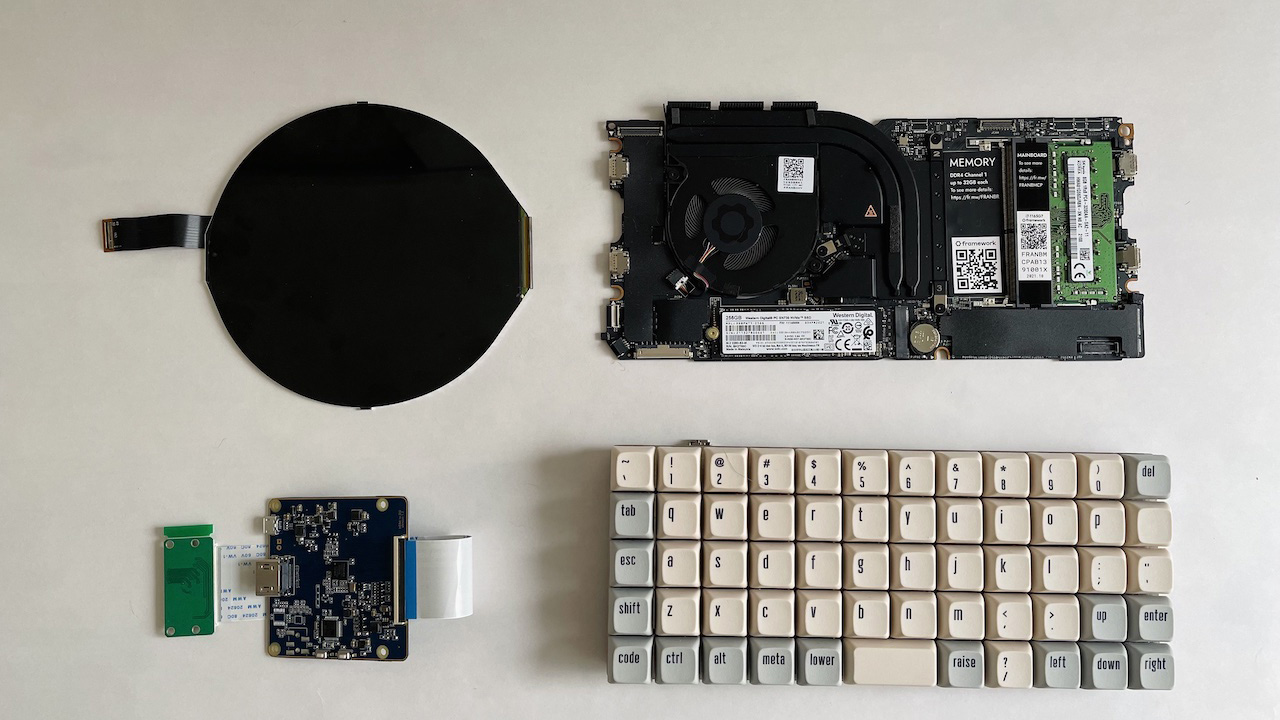Sensational Circular-Screened Cyberdeck Hides Modular Intel 11th Gen PC
Retro on the outside, but very much a modern PC on the inside
Anyone fed up with viewing the world through a series of rectangles - monitors, cellphones, even windows - should check out this DIY cyberdeck PC from unstoppable hacker Penk Chen, whose work we’ve featured before. Powered by the Framework Mainboard, not only does it have a retro charm all of its own, but its circular screen is like nothing else out there.

That screen is the build’s most striking feature. A circular five-inch AMOLED with a resolution of 1080 x 1080px, that fits into a 3D printed housing. The screen comes with its own HDMI to MIPI DSI driver adaptor board, and is essentially plug and play with Penk’s chosen operating system, Ubuntu 22.04 LTS, only requiring a little bit of code that he details on GitHub.
The system runs on a Framework Mainboard, the guts of a modular laptop project that’s now being sold separately so you can use it in your own projects. Penk doesn’t mention which one he’s using (it looks like an i7 in pictures), but there are three configurations available, sporting an i5 or choice of i7s, all 11th-gen with Xe graphics. They come with sockets for DDR4 RAM and PCIe 4.0 NVME storage, which you need to add yourself, and USB4 ports for further expansion.
The keyboard is an interesting compact model from Drop, with an aluminum case, choice of five colors, and USB-C connector. The 59 keys are in a layout similar to Planck, but with an extra row for numbers, function keys, or whatever you choose to program in there. It has a small inbuilt speaker that can notify you on startup, when you change default layout, and when the keyboard is in firmware upgrade mode, and there are nine RGB LEDs that glow through the bottom of the case.
As there's currently no way of accessing the USB4 ports on the mainboard, a little ingenuity might be needed if you intend to connect any peripherals. If you want to try making your own, Penk has made files for the 3D printed casing, which is held together with magnets, available on GitHub, along with plenty of details, even down to the paint color used.
Get Tom's Hardware's best news and in-depth reviews, straight to your inbox.

Ian Evenden is a UK-based news writer for Tom’s Hardware US. He’ll write about anything, but stories about Raspberry Pi and DIY robots seem to find their way to him.